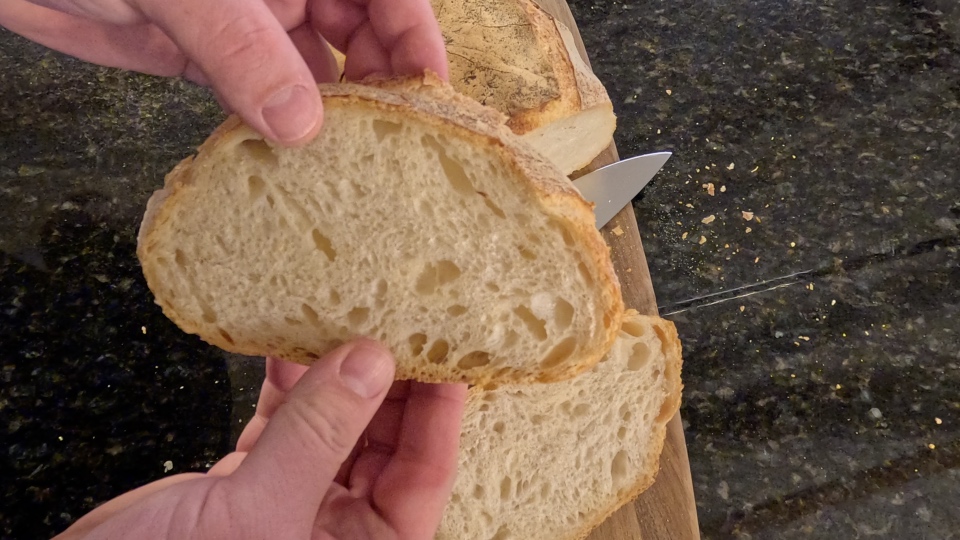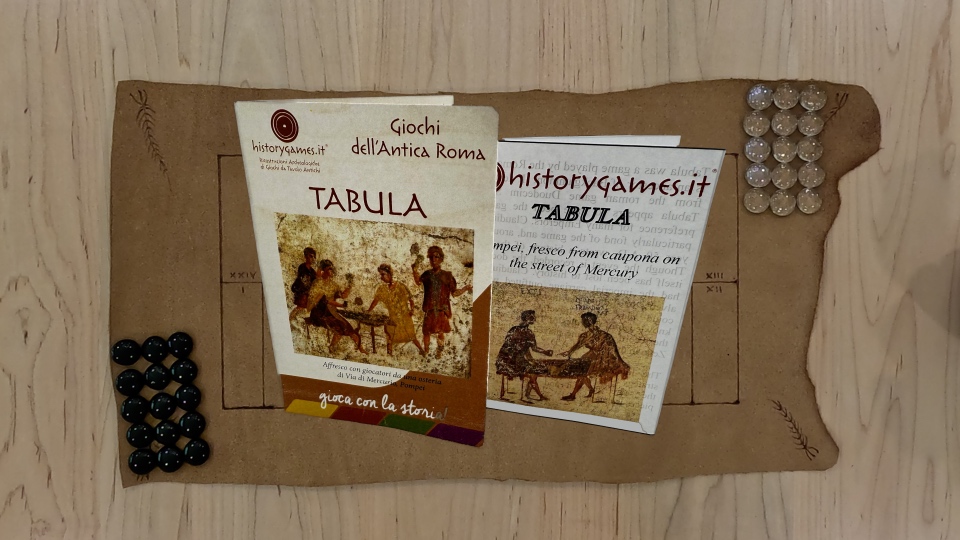Boule
Homemade bread with a crackling exterior and light, soft but chewy interior helps make a place or space a home and every meal complete. The Boule or French Boule is a humble example made from flour, water, salt and yeast. Come bake and break bread with us.
The ingredient list couldn't be more simple - just four items. Living in a rural area we draw our water from a well which is unchlorinated. If you have public water it is normally chlorinated, but the levels should be low enough to not make a difference. That said, you may notice a difference if the chlorine levels happen to be high and your yeast is past its prime. Filtered or bottled water is good insurance. Use a higher-protein bread flour instead of all-purpose for better gluten development. If all you have is AP it should work but you will get less structure and chew. We use King Arthur brand. Salt enhances taste and strengthens the gluten structure for better volume. It also slows the fermentation allowing more flavor to develop. For yeast we use active dry granules. In a pinch we also use instant or rapid-rise.

Weighing the flour and water is essential. Target a 70% hydration ratio which is the water weight divided by the flour weight. For example, 350g water to 500g flour (1 boule) or 700g water to 1000g flour (2 boules). This level of hydration will make a sticky dough that is somewhat difficult to work with. Resist the urge to add more flour! Moisten your hands before working the dough and use a plastic curved scraper for the bowl. Your hands will inevitably have some dough stuck to them - accept it and just do your best!

A minimal amount of yeast is used - just 1/4 teaspoon. This slows the rise and allows more flavor to develop. Be sure to keep the bowl covered to prevent evaporation and any change in the hydration ratio. Normally the dough is started the night before you expect to eat - referred to as Day 1. On Day 2 the dough is worked, rested, divided, allowed to rise, baked and cooled. Day 2 involves a handful of short tasks over the course of 4.5-5 hours. If you start the dough at 7pm on Day 1 you will complete the process on Day 2 by noon. Adjust according to your expectations.

Work the dough by stretching and folding it on itself. Allow it to rise to improve the structure and make it more elastic with evenly distributed air pockets. During the rest/rise the dough will also become easier to work with and fermentation will continue to develop flavor. If you make a larger batch divide the dough prior to the final cycle. Be sure to keep the dough covered throughout to maintain hydration.

Prior to the final rise, degas or punch down the dough. Use a 9" cloth-lined proofing basket and a flour sack towel to cover. Lightly flour the cloth liner and dough ball to prevent sticking. By the end of the two hours the dough ball will have conformed to the rough dimension of the basket and be very delicate. Preheat the oven to 500°F with an 8-quart dutch oven about an hour into the final rise.

Using a dutch oven with lid traps steam coming off from the dough keeping the skin moist and pliant. This allows the gas pockets in the dough to expand inflating the boule before it sets. The skin itself will also be thinner allowing it to crisp. To prevent an undesirable blow-out during the oven spring use a bread lame to score the surface. Get as fancy as you like here.

30 minutes in the oven with the lid-on inflates and sets the dough. 15 minutes with the lid off crisps the skin, develops a golden-brown color and finishes baking the dough through. Once finished, remove the boule to a cooling rack for 30 minutes and listen to the symphony of crackle.

Boule
Makes one boule.
Ingredients:
- 350g Warm Water
- 1/4 Teaspoon Active Dry Yeast
- 500g Bread Flour
- 10g Kosher Salt
Instructions:
- Add the water and yeast to a large mixing bowl and whisk to combine. Add the flour and use a fork to create a shaggy dough. Add the salt and hand mix, kneading to create a sticky ball. Cover tightly to prevent evaporation and ferment for 12 hours at room temperature.
- Remove the cover to the bowl and loosen the edges of the dough with a plastic scraper. Stretch and fold the dough 2/3 of the way across itself in four directions. Cover again and rest for 30 minutes. Repeat this step one additional time.
- Remove the cover to the bowl and turn out onto a clean surface. If you are making more than one boule scale and divide the dough. Stretch and fold each dough ball 2/3 of the way across itself in four directions. Cover each ball with a mixing bowl and rest for 30 minutes.
- Remove the bowls and degas or punch-down the dough balls. Stretch and fold the dough 2/3 of the way across itself in four directions. Shape each dough into a tight ball and lightly flour. Lightly flour lined proofing baskets for each dough and place the dough in them seam side up. Cover and proof for 2 hours. After 1 hour, preheat the oven and a sufficient number of 8-qt dutch ovens to 500°F.
- After the 2 hour final proofing is complete, remove the preheated dutch oven and dump the boule into it seam side down. Score the top of the dough with a lame. Quickly cover with the preheated lid and return to the oven. Bake for 30 minutes with the cover on, then an additional 15 minutes with the cover off. Once finished, transfer the boule to a cooling rack for 30 minutes.

A few years back we spent a late afternoon in a 10th arrondissement Parisian boulangerie learning tips and tricks of the trade. We got covered in flour and asked a million questions. That experience broadened our horizons on process and the pursuit of baking perfection. The way in which dough is handled by a professional boulanger seems effortless. While we are not subject to French bread laws (see Décret Pain), the principles of quality are there for a reason. Only four ingredients are allowed: wheat flour, water, salt and yeast. Boulangeries must knead, shape and bake on site to use the label homemade. Sounds simple, but these benchmark decrees are unmet by most commercial bread sold throughout the US. Give it a try, and then another try. Comment on our YouTube page if you have any tips or techniques to share - Thanks!

Copyright © 2024 - 2025 Purpose Circus


